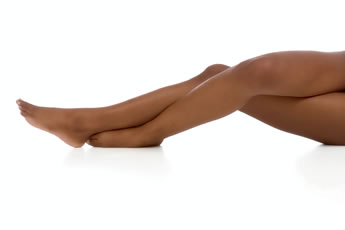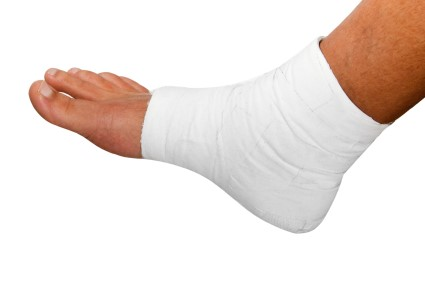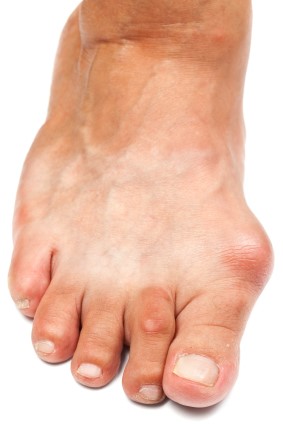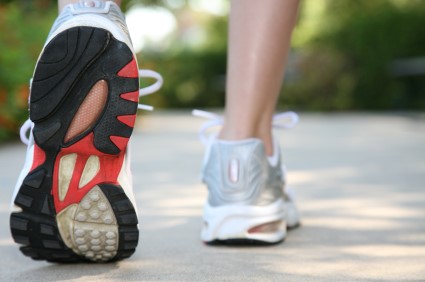Blog
Beware of Corns
 Three common types of skin conditions that affect both hands and feet are corns, blisters and calluses. However, calluses mostly occur on the feet. Blisters are caused when the epidermis becomes damaged and fluid flows in to protect the lower layers of skin. This fluid creates a raised sac; also known as a blister. Heat, friction, and extremely cold conditions are the three main causes of blisters. People may be tempted to burst a blister in hopes of getting rid of it, but it is best to allow them to heal on their own. Corns, which are another type of skin condition, are caused by friction on the skin. They develop in a circular shape near the bones on toes and fingers. Corns are very uncomfortable and need to be treated by a medical professional.
Three common types of skin conditions that affect both hands and feet are corns, blisters and calluses. However, calluses mostly occur on the feet. Blisters are caused when the epidermis becomes damaged and fluid flows in to protect the lower layers of skin. This fluid creates a raised sac; also known as a blister. Heat, friction, and extremely cold conditions are the three main causes of blisters. People may be tempted to burst a blister in hopes of getting rid of it, but it is best to allow them to heal on their own. Corns, which are another type of skin condition, are caused by friction on the skin. They develop in a circular shape near the bones on toes and fingers. Corns are very uncomfortable and need to be treated by a medical professional.
If you have any concerns about your feet and ankles contact Dr. Michael E. Newman of Pennsylvania. Our doctor can provide the care you need to keep your pain free and on your feet.
Corns: What are they? And how do you get rid of them?
Corns can be described as areas of the skin that have thickened to the point of becoming painful or irritating. They are often layers and layers of the skin that have become dry and rough, and are normally smaller than calluses.
Ways to Prevent Corns
There are many ways to get rid of painful corns such as wearing:
- Well-fitting socks
- Comfortable shoes that are not tight around your foot
- Shoes that offer support
Treating Corns
Treatment of corns involves removing the dead skin that has built up in the specific area of the foot. Salicylic acid can help in getting rid of these corns because it dissolves keratin, which is the protein that makes up a good majority of corns. Podiatrists recommend that people with diabetes not use salicylic acid but should consult with their podiatrist regarding the treatment of corns.
If you have any questions please feel free to contact our office located in Plymouth Meeting and Ambler, PA. We offer the newest diagnostic and treatment technologies for all your foot and ankle needs.
Mitchell Starc returns after Stress Fracture
 Mitchell Starc was spotted bowling again, training at the National Cricket Centre in Brisbane, after having recovered after his stress fracture foot incident in November of last year. “He’s looking fresh and bowling at good pace. … It’s exciting to have him back and hopefully he can have some success straight away, or pick up where he left off,” said Australian captain Steven Smith.
Mitchell Starc was spotted bowling again, training at the National Cricket Centre in Brisbane, after having recovered after his stress fracture foot incident in November of last year. “He’s looking fresh and bowling at good pace. … It’s exciting to have him back and hopefully he can have some success straight away, or pick up where he left off,” said Australian captain Steven Smith.
Activities where too much pressure is put on the feet can cause stress fractures. To learn more, contact Dr. Michael E. Newman of Pennsylvania. Our doctor can provide the care you need to keep your pain free and on your feet.
Dealing with Stress Fractures of the Foot and Ankle
The Stress Fractures occur on the foot and ankle when muscles in these areas weaken from too much or too little use. Then the feet and ankles lose support when walking or running from the impact of the ground. Since there is no protection the bones receive the full impact of each step. The stress on the feet causes cracks to form in the bones, thus called stress fractures.
What are Stress Fractures?
Stress fractures occur frequently in individuals whose daily activities cause great impact on the feet and ankles. Stress factors are most common among:
-runners
-people affected with Osteoporosis
-play tennis or basketball
-gymnastics
-high impact workouts
Symptoms
Pain from the fractures occur in the area of the fractures, and can be constant or intermittent. It will often cause sharp or dull pain with swelling and tenderness. Engaging in any kind of activity which involves in high impact will aggravate pain.
If you have any questions please feel free to contact our offices located in Plymouth Meeting and Ambler, PA. We offer the newest diagnostic tools and technology to treat your foot and ankle needs.
Identifying Bunions
 Bunions can be described as growths that form at the base of your big toe, usually caused by changes to our foot’s bone structure, such as ill-fitting shoes, flat feet, or genetics. Bunions are also known as hallux valgus, and are more common among women than in men. Properly-fitting shoes can help alleviate pain or irritation caused by bunions, and it is best to see your doctor to diagnose your condition and treat it. Other methods for treating bunions involve shoe inserts, supporting the feet through taping or splinting, and cortisone injections.
Bunions can be described as growths that form at the base of your big toe, usually caused by changes to our foot’s bone structure, such as ill-fitting shoes, flat feet, or genetics. Bunions are also known as hallux valgus, and are more common among women than in men. Properly-fitting shoes can help alleviate pain or irritation caused by bunions, and it is best to see your doctor to diagnose your condition and treat it. Other methods for treating bunions involve shoe inserts, supporting the feet through taping or splinting, and cortisone injections.
Bunion surgery usually occurs after non-surgical methods have proved to be ineffective. If you have any concerns,consult with Dr. Michael E. Newman of Pennsylvania. Our doctor will assist you with all of your foot and ankle needs.
What is a Bunion?
A bunion is formed of swollen tissue or an enlargement of boney growth, usually located at the base joint of the toe that connects to the foot. The swelling occurs by the bones in the big toe shifting inward, which impacts the other toes of the foot. This causes the area around the base of the big toe to become inflamed and painful.
Why do Bunions Form?
- Genetics – susceptibility to bunions are often hereditary
- Stress on the feet – poorly fitted and uncomfortable footwear that places stress on feet, such as heels, can cause bunions to form
How are Bunions Diagnosed?
Doctors often perform two tests – blood tests and x-rays – when trying to diagnose bunions, especially in the early stages of development. Blood tests help determine if the foot pain is being caused by something else, such as arthritis, while x-rays provide a clear picture of your bone structure to your doctor.
How are Bunions Treated?
- Refrain from wearing heels or similar shoes that cause discomfort
- Select wider shoes that can provide more comfort and reduce pain
- Anti-inflammatory and pain management drugs
- Orthotics or foot inserts
- Surgery
If you have any questions please feel free to contact our offices located in Plymouth Meeting and Ambler, PA. We offer the newest diagnostic tools and technology to treat your foot and ankle needs.
Tips for Running Safely and Preventing Injuries
 According to greatist.com, there are some tips to follow for those who are avid runners, especially for avoiding injuries. If you plan on preparing for a marathon, gradually break into a running routine and make sure to incorporate training into your schedule. Stretching is also important for ensuring that your muscles don’t become too strained or overstressed. Don’t forget to take breaks and rest in between your training. Make sure to invest in more than just one sturdy pair of running shoes, see a doctor if you’re experiencing any pain in your feet, stay hydrated, and be aware of your pronation style to avoid injury.
According to greatist.com, there are some tips to follow for those who are avid runners, especially for avoiding injuries. If you plan on preparing for a marathon, gradually break into a running routine and make sure to incorporate training into your schedule. Stretching is also important for ensuring that your muscles don’t become too strained or overstressed. Don’t forget to take breaks and rest in between your training. Make sure to invest in more than just one sturdy pair of running shoes, see a doctor if you’re experiencing any pain in your feet, stay hydrated, and be aware of your pronation style to avoid injury.
Runners can still be prone to running injuries even with proper precautions. For more information about treatment, consult with Dr. Michael E. Newman of Pennsylvania. Our doctor will assist you with all of your foot and ankle needs.
How to Prevent Running Injuries
Many common running injuries are caused by overuse and overtraining. When the back of the kneecap starts wearing out and starts causing pain in your knee, this is commonly referred to as runner’s knee. Runner’s knee is a decrease in strength in your quadriceps and can occur if you’re not wearing properly fitted or supporting shoes. To prevent runner’s knee, focusing on hip strengthening is a good idea, as well as strengthening your quads to keep the kneecaps aligned.
What Are Some Causes of Running Injuries?
- One cause of a common running injury is called iliotibial band syndrome.
- Plantar fasciitis is also another common injury.
- Stress fractures can occur from overtraining, lack of calcium, or even your running style.
Best Ways to Prevent Running Injuries
- Wear footwear that fits properly and suits your running needs.
- Running shoes are the only protective gear that runners have to safeguard them from injury.
- Make a training schedule. Adding strengthening exercises as well as regular stretching can help keep you strong and limber and can lessen the possibility of injuries.
- Stretching keeps muscles limber, this will help you gain better flexibility.
If you have any questions please feel free to contact our offices located in Plymouth Meeting and Ambler, PA. We offer the newest diagnostic tools and technology to treat your foot and ankle needs.
